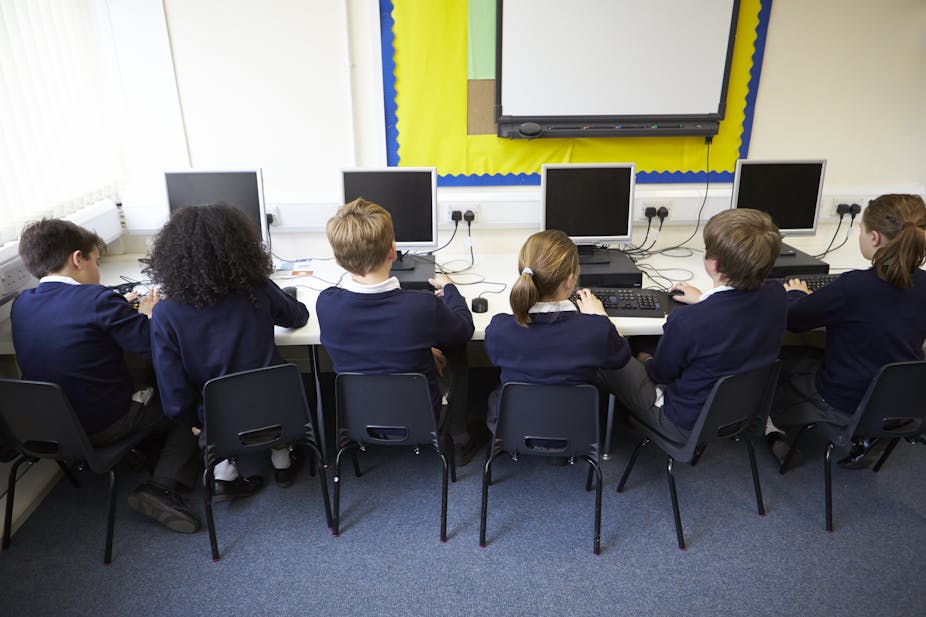On our way to a school just outside the small Cumbrian village of Wigton to run a computing session, we were delayed by a tractor and a herd for cows crossing the road.
The school we were heading to has a total of 67 pupils across six years, where mixed age classes are a necessity. This is a fairly typical school for the area, even the laptops the teachers are using are old and slow, as is the internet connection.
Rural schools such as the one we were visiting face distinct challenges when it comes to teaching computing — many schools in rural locations are struggling to even know how to get started. These schools feel very removed from the “digital economy” which the computing curriculum is supposed to be preparing our pupils for.
These schools are below the radar when it comes to developing materials for the new curriculum. Resources tend to focus on single age classrooms of moderate size, taking it as given that the computers available are capable of at least running Scratch – an educational program used to create animations, games and stories – with the assumption also given that students will have access to iPads for coding apps such as scratch JR.

These remote areas are even more prone to have the teacher skills gap, which has been recognised a major challenge for computing curriculum. Where in more populous areas there may be opportunities for twilight sessions or bringing in external contractors to support teaching, these sorts of resources are just not available in these more rural locations.
There are no “specialist” teachers in small schools, and when faced with the specialist language of computing teachers can quickly feel out of their depth.
For both teachers and students computers are often more a source of frustration rather than creativity. More than once it has been reported to me that computing lessons can be taken up by turning on the laptops, logging-on, helping the kids find the right program – just these steps can take the whole hour.
In these areas schools don’t always know where to look for support. Although Computing At Schools (CAS) has been busily developing resources for primary schools even finding CAS can feel like a big step.
In rural schools, there are also fewer opportunities to bring in volunteers from the community through schemes such as after school code clubs. This is revealing in that it shows yet another resource that is not available to these schools, and also demonstrates that there are fewer high tech jobs among parents of these children.
Joining the dots
The challenges faced by rural schools need be to be addressed, because although, the spotlight of the digital future might currently be on topics like “smart cities”, rural areas are not going to be left behind in the “digital economy” — as the Cumbria fibre role-out demonstrates. loin
The more remote places will soon be just as connected and with connection speed no longer a barrier to competition, those living in the remotest parts of the UK will have no choice but to be part of the coming digital economy.
These school falling further and further behind is not inevitable, these schools have the potential to soon be demonstrating some of the most exciting ways of teaching computing to the youngest pupils.
These schools may not have great access to technology tools but they do still tend to have a school field, so learning how to adapt unplugged approaches to teaching computing can make the computing curriculum more tangible. Teaching computing without computers becomes a great way for kids to really grasp the fundamentals of computing.

Teachers working in mixed age classrooms are in a prime position to introduce computing across the curriculum – teachers are with the same pupils for much of the day and have the flexibility to integrate computing across a range of subjects.
As the pupils we worked with in Wigton can tell you “an algorithm” is a set of instructions, and primary schools are full of instructions. With the pressures on time and resources computing could be taught in all parts of the school day, from art and reading, to play time.
I have found that once you ensure teachers have a solid understanding of the curriculum itself they begin to see opportunities to teach computing — for example, writing an algorithm for tidying up the art area.
The pupils we worked with in Wigton really enjoyed using Scratch Jr on the iPads we brought in, but also learned a great deal about algorithms and debugging by playing with Lego. Which just goes to show that with the right resources targeted at these sorts of schools, these pupils will be ready for the digital economy, despite the remoteness of their surroundings.

